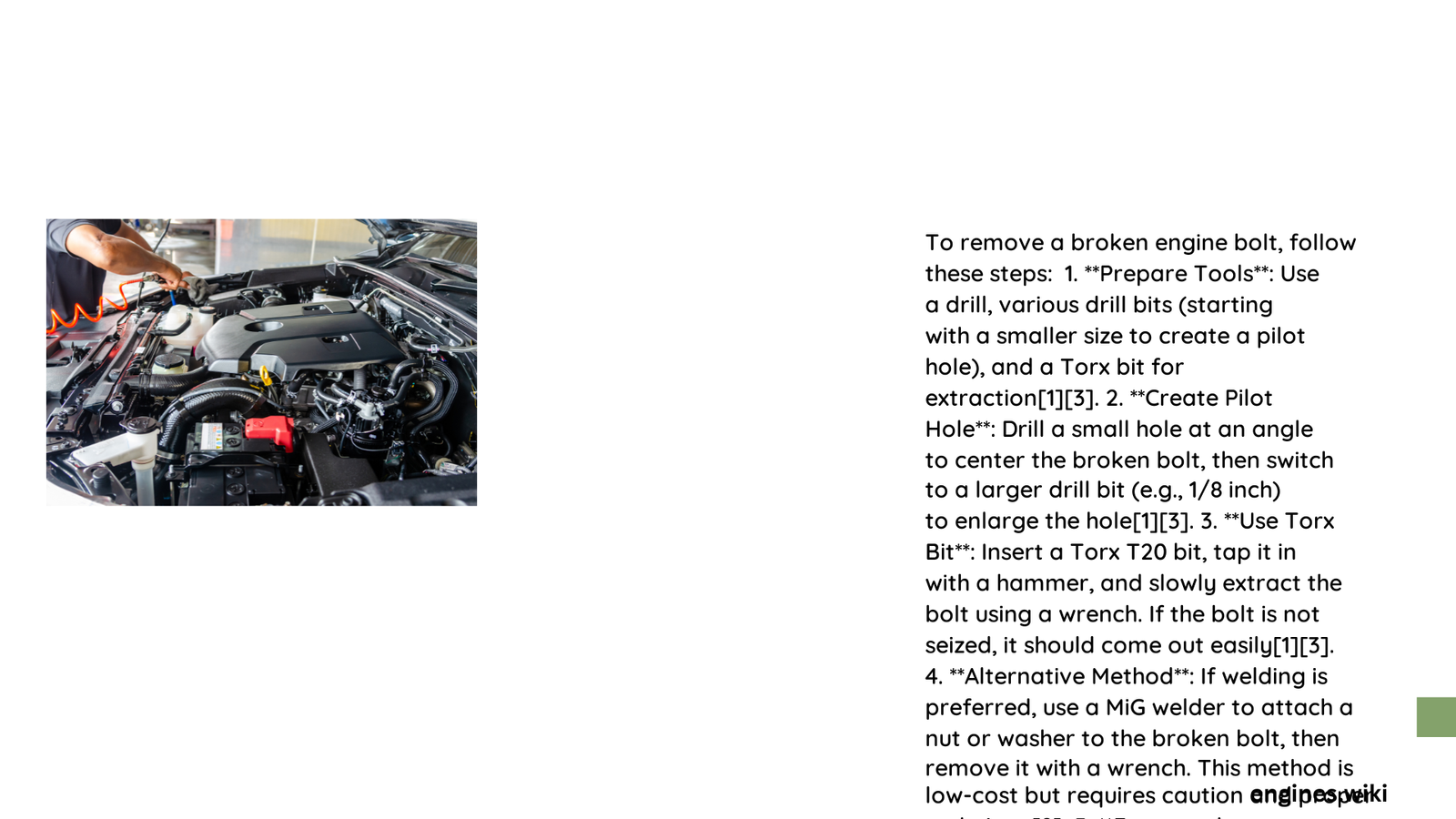Engine bolt removal is a critical skill for automotive technicians and DIY mechanics, requiring precision, specialized tools, and strategic approaches to extract damaged or broken fasteners without causing additional engine damage. Broken bolts can occur due to corrosion, over-torquing, material fatigue, or improper installation, presenting complex challenges that demand methodical problem-solving and technical expertise.
What Makes Engine Bolt Removal Challenging?
Engine bolt removal involves navigating tight spaces, managing different metal compositions, and preventing potential damage to critical engine components. Factors that complicate the process include:
- Corrosion and rust buildup
- Limited access in compact engine compartments
- Varying bolt materials and thread configurations
- Risk of damaging surrounding engine structures
What Tools Are Essential for Successful Bolt Extraction?

Primary Extraction Tools
| Tool | Purpose | Effectiveness Rating |
|---|---|---|
| Bolt Extractor Set | Direct bolt removal | ★★★★☆ |
| Left-Handed Drill Bits | Simultaneous cutting and extraction | ★★★☆☆ |
| MIG Welder | Welding technique for bolt removal | ★★★★☆ |
| Center Punch | Creating precise drilling guide | ★★★☆☆ |
How to Prepare for Bolt Removal?
Pre-Extraction Checklist
- Disconnect battery terminals
- Clean surrounding area thoroughly
- Identify bolt material and condition
- Select appropriate extraction method
- Gather necessary protective equipment
What Are Advanced Extraction Techniques?
Method 1: Welding Extraction
- Select appropriately sized nut or washer
- Weld nut onto broken bolt head
- Use wrench to rotate and remove simultaneously
Method 2: Drill and Extract
- Use center punch to create drilling guide
- Select correct drill bit size
- Drill carefully into bolt center
- Apply extractor tool with controlled pressure
Pro Tips for Preventing Bolt Damage
- Always use calibrated torque wrench
- Apply proper lubrication during installation
- Inspect threads before reassembly
- Replace damaged bolts immediately
- Follow manufacturer’s specific torque specifications
Common Mistakes to Avoid
- Forcing stuck bolts without proper technique
- Using incorrect extraction tools
- Neglecting thread cleaning
- Applying excessive heat without controlled method
- Ignoring manufacturer’s recommended procedures
Specialized Considerations
Material-Specific Challenges
- Aluminum Engines: Require gentler extraction methods
- Steel Bolts: More tolerant to aggressive techniques
- Composite Materials: Need precision and careful approach
When to Seek Professional Help
Consider professional intervention if:
– Multiple extraction attempts fail
– Significant engine component damage is suspected
– Specialized machining is required
– Complex engine configurations are involved
Cost and Time Considerations
Extraction Method Comparison
| Method | Average Time | Estimated Cost | Complexity |
|---|---|---|---|
| DIY Extraction | 1-3 hours | $50-$200 | Moderate |
| Professional Service | 2-4 hours | $200-$500 | Low |
Final Recommendations
Successful engine bolt removal demands patience, proper tools, and methodical approach. Always prioritize engine integrity over quick fixes, and invest in quality extraction tools for long-term automotive maintenance.
